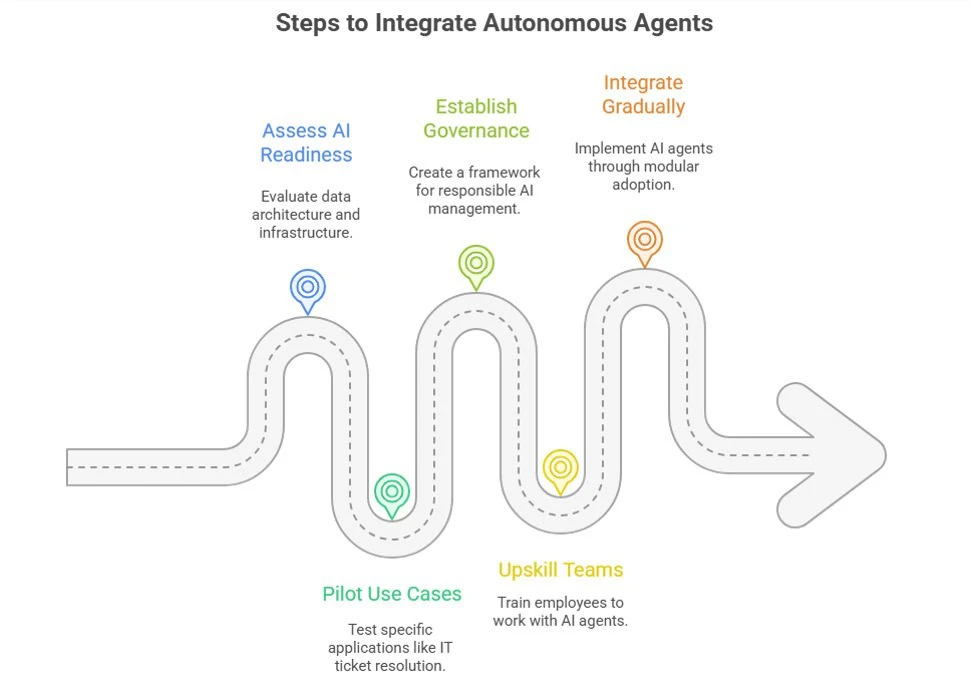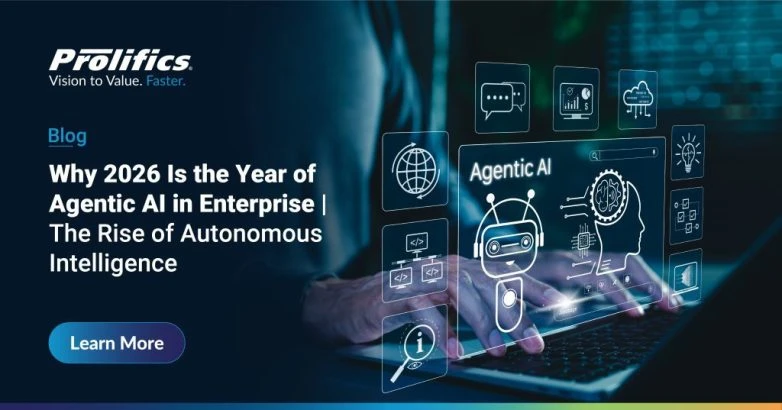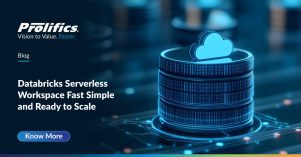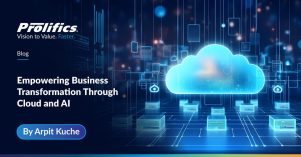The Dawn of Autonomous Intelligence
2026 is emerging as a landmark year for Agentic AI in Enterprise. For decades, enterprises have chased automation and intelligence through traditional AI, robotic process automation, and generative tools. But the next era belongs to Agentic Artificial Intelligence, AI that doesn’t just generate insights or follow instructions, but acts with purpose, autonomy, and accountability.
New IDC research outlines how agentic AI will reshape strategy, workforce, and innovation across global enterprises by 2030. IDC forecasts that by 2030, 45% of organizations will orchestrate AI agents at scale, embedding them across business functions.
This evolution is not just another step in digital transformation. It’s a leap toward AI-driven enterprise intelligence, where decision-making, execution, and optimization are seamlessly orchestrated by intelligent agents. Businesses are moving from “AI that assists” to “AI that achieves.”
What is Agentic AI?
At its core, Agentic AI is the evolution of AI beyond “assistants” into “agents” that can perceive, reason, plan, and act with minimal human supervision.
“Traditional AI systems are designed to analyse data, make predictions, or generate content. However, Agentic AI goes a step further by enabling systems to take autonomous actions …”
Key traits of Agentic AI include:
- Autonomy: Agents perform tasks without human-in-the-loop for every decision.
- Real-time decision making: Agents monitor evolving environments and make decisions on the fly.
- Adaptability & learning: Agents learn from feedback and adjust behaviour over time.
- Multi-agent collaboration: Agents interact with one another, coordinate workflows, and form dynamic orchestration networks.
Put simply, if earlier generations of AI were “analysts” or “generators,” Agentic AI is the “doer”, agents that act on behalf of business processes, systems, or people, rather than merely responding to them.
Why Now? The Drivers of Agentic AI Adoption
Several powerful market and technology trends are converging to make Agentic AI not just possible, but essential for competitive enterprises:
- Hyper automation demand: Businesses want to automate end-to-end processes, not just discrete tasks. Agentic AI enables systems that coordinate across processes, make decisions, and act, versus legacy automation, which follows static rules.
- Real-time intelligence: In fast-moving markets (supply chain, security, IT ops), decisions must be made in the moment. Agentic agents enable continuous perception → reasoning → action loops.
- Data & AI maturity: Enterprises are building strong data foundations and are comfortable with AI/ML models. Now the question becomes, how do we embed intelligence into operations and workflows? Agentic AI is the logical next step.
- Scale and integration: AI is no longer an isolated pilot. It needs to be integrated into enterprise platforms, systems, and business processes. Agents that can coordinate across systems are needed.
Transformation Opportunities: Where Agentic AI Makes a Difference
Agentic AI isn’t just a futuristic concept; it’s showing traction across industries and functions:
- IT operations/DevOps: Agents monitor infrastructure, detect anomalies, autonomously remediate or escalate issues, thereby shifting from reactive to proactive operations.
- Security & risk management: Autonomous agents can analyse threat feeds, coordinate countermeasures, and act faster than human-only modes could.
- Supply chain/logistics: Agents react to dynamic conditions (weather, demand swings, bottlenecks), replan routes, shift schedules, and reallocate resources.
- Customer service & contact center: Beyond chatbots, agents can coordinate across departments, update systems, take actions (refunds, escalations), freeing humans to focus on higher-value tasks.
- Finance & decisioning: Agents monitor risks, regulatory changes, evolving data; they reason and act, e.g., rerouting capital, adjusting allocations, automating compliance workflows.
- Manufacturing/operations: Autonomous agents orchestrate machines, robots, human workflows, closing the loop from sensing → action → feedback.
The Benefits of Agentic AI in Enterprise Decision-Making
The benefits of adopting agentic AI in enterprise decision-making extend far beyond cost efficiency.
- Autonomous Decision-Making
Agentic systems evaluate vast datasets and act on insights in real time. This eliminates delays between analysis and execution, empowering instant responses to market dynamics. - Continuous Improvement
Every decision an agent makes contributes to learning. This feedback loop means the system becomes more precise and adaptive with each cycle. - Operational Efficiency
Through AI automation and decision-making, enterprises can delegate time-intensive operations, such as resource allocation or incident management, to intelligent agents. - Enhanced Scalability
multi-agent collaboration systems allow enterprises to scale decision-making across regions, departments, and business units without increasing human headcount. - Smarter, Data-Driven Strategies
By combining analytics with autonomous action, enterprises gain continuous, contextual insights, driving smarter business strategies and customer engagement.
Next-Generation AI Assistants: Beyond Copilots
The era of digital copilots marked the beginning of enterprise AI adoption. But next-generation AI assistants take the concept further. These assistants no longer wait for user prompts; they anticipate needs, plan responses, and execute solutions independently.
Imagine agents that:
- Proactively optimize supply chain routes.
- Monitor IT systems for anomalies and resolve them automatically.
- Orchestrate marketing campaigns, from content creation to ROI tracking.
This is how businesses are adopting agentic AI for digital transformation, not as isolated tools but as autonomous collaborators that work across business processes.
The Role of LLMs in Powering Agentic AI Systems
At the heart of agentic artificial intelligence lies the role of LLMs in powering agentic AI systems.
LLMs act as reasoning engines, enabling agents to understand context, interpret data, and interact naturally with humans and other machines.

Their capabilities extend beyond language; they plan, execute, and reflect. When fused with enterprise data pipelines, these models become the cognitive core of AI-driven enterprise intelligence, enabling systems to handle tasks that once required human judgment.
By 2026, expect LLM-powered agents to manage workflows across marketing, HR, IT, and finance with minimal supervision.
Challenges and Guardrails: Responsible Autonomy
As with any transformative technology, Agentic AI in Enterprise 2026 introduces new challenges. Responsible adoption depends on careful guardrails:
- Ethical Oversight: Define clear human-in-the-loop boundaries to prevent unintended actions.
- Governance Frameworks: Establish transparent systems for decision auditing and accountability.
- Data Security: Protect sensitive information through encryption and controlled access layers.
- Bias Mitigation: Continuously test and tune models to ensure fair outcomes.
- Regulatory Compliance: Align agentic AI deployments with evolving data and AI regulations worldwide.
These considerations ensure that enterprises balance autonomy with responsibility, building trust among stakeholders, clients, and regulators.
How Agentic AI Will Redefine Enterprises by 2026
Here’s why agentic AI will redefine enterprises by 2026:
Agentic AI represents a paradigm shift from efficiency to evolution. Enterprises that adopt it gain systems capable of self-learning, self-adjusting, and self-improving.
By combining automation, analytics, and autonomy, agentic systems enable enterprise AI transformation that drives:
- Real-time operational intelligence.
- Strategic agility in decision-making.
- Predictive and proactive management across business functions.
This transformation marks the rise of the autonomous enterprise, one that not only responds to change but anticipates it.
Preparing for the Agentic Future: What Enterprises Should Do Now
Enterprises that want to lead in the agentic AI era of 2026 should begin laying the groundwork today.
Start by reviewing your AI readiness, your data architecture, governance model, and cloud environment will determine your ability to scale.
Experiment with focused, measurable pilots such as AI-driven IT support or automated financial forecasting to prove value early.
Establish a strong AI governance framework to ensure accountability, transparency, and responsible automation.
Empower your teams through continuous learning, helping them collaborate effectively with intelligent agents.
Finally, integrate agentic capabilities gradually and strategically, using modular adoption to maintain control and scalability.

Those who act now will be ready to lead as Agentic AI transforms enterprise automation.
The Strategic Role of Prolifics: From Pilot to Production
While the potential is clear, the challenge of Agentic AI is scaling it from isolated proofs to enterprise-grade deployments. That’s where Prolifics comes in – bringing the end-to-end expertise that bridges strategy, data, AI models, platforms and operations:
- Prolifics offers industry-specific AI consulting services: Their site notes that they’ve been delivering AI solutions across healthcare, finance, retail, and manufacturing for over 45 years with a team of 2,000+ experts.
- They emphasise emerging technologies, including Agentic AI: “We combine deep industry knowledge with agentic AI capabilities to deliver intelligent, adaptive solutions tailored to your unique business goals.”
- They cover the full lifecycle: From AI strategy & discovery, through proof-of-value, to MVP development, deployment, scaling and governance. Their framework shows how they help reduce time-to-value, cost, and get ROI.
- Domain integration and technology partnerships: Prolifics’ capabilities span data engineering, analytics, cloud, application modernisation, and business automation – all essential foundations for deploying agentic systems.
- Responsible, governed AI: Because agentic systems act autonomously, governance, observability, and human-in-the-loop oversight become critical. Prolifics integrates AI governance into its offerings




